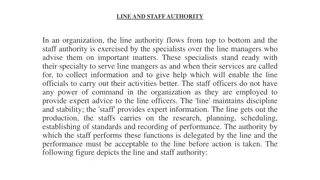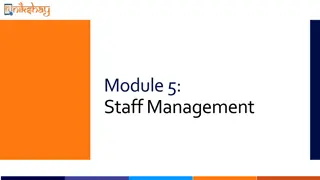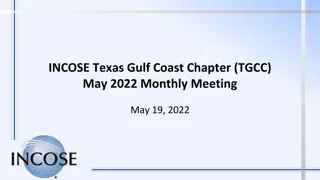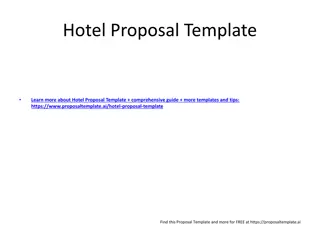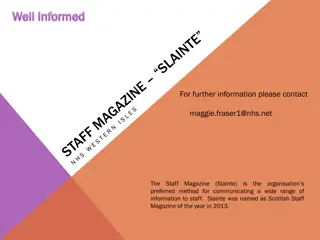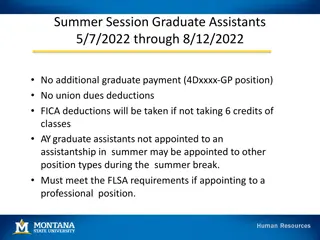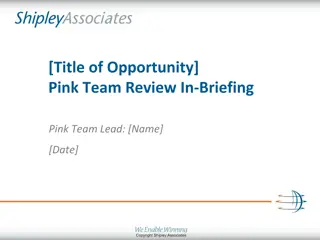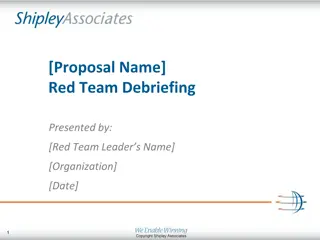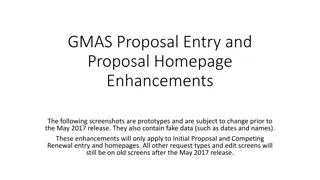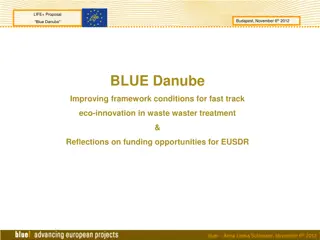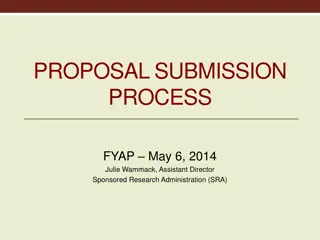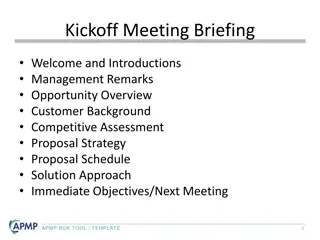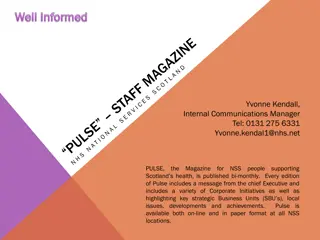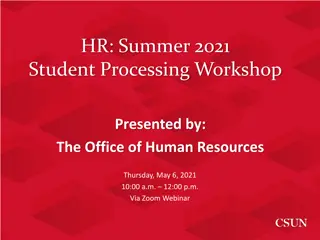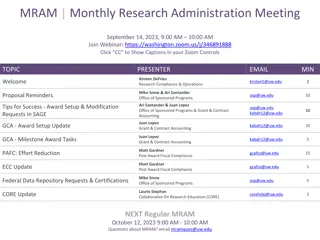Staff Discussion on Responses to CLO Proposal at 2022 Summer National Meeting
Staff discussion at the 2022 Summer National Meeting in Portland, Oregon centered around responses to a CLO proposal, highlighting concerns about timeline, policy arguments, transparency, and methodology. Participants acknowledged the historical performance of CLOs and emphasized the importance of balancing risks to maintain CLOs as a viable investment option for insurers.
Download Presentation

Please find below an Image/Link to download the presentation.
The content on the website is provided AS IS for your information and personal use only. It may not be sold, licensed, or shared on other websites without obtaining consent from the author. Download presentation by click this link. If you encounter any issues during the download, it is possible that the publisher has removed the file from their server.
E N D
Presentation Transcript
Staff Discussion of Responses to CLO Proposal 2022 Summer National Meeting August 11, 2022 Portland, Oregon
Introduction At the June 9th meeting, VOS (E) TF exposed a memo calling for an internal modeling of CLOs as well as extended Designation Categories (6.A, 6.B and 6.C). We have received eight responses from the following parties: Party Descriptiom Life Insurance trade association ACLI Private Equity trade association AIC Insurance company Athene Rating agency (N.B. EJR s CLO ratings are not CRP-eligible). EJR Commercial loan origination, syndication and trading trade association. LSTA Asset manager PineBridge Structured Finance trade association. SFA Insurance company TIAA/Nuveen 10/8/2024 2
Summary of the Concerns Responses are best summarized as cautious. Some responses were supportive with caveats. Most of the other responses expressed concern with the proposal or its implications. Their concerns are best categorized as follows: 1. Timeline. Respondents were concerned about the timeline of the proposal as well as an opportunity for comment. 2. Policy Arguments. These sought to appeal to the importance of CLOs to the US capital markets and the historical performance of the asset class. 3. Transparency. 4. Methodology. Today, we will deal with the first two issues, since staff believes that there will be many opportunities to make and deal with transparency and methodology. 10/8/2024 3
Big Picture Responses We acknowledge that the historical performance of CLOs has been excellent weathering three economic downturns - dotcom bubble, GFC and COVID. The goal of the proposal is to balance the risks to ensure that CLOs continue to be an investment option for insurers. If the proposal is approved, there will be many more opportunities to comment on all elements of the proposal, including on process, methodology, scenarios and probabilities. The process is intended to be maximally transparent market participants should be able to replicate our results. When evaluating the proposal, especially with respect to RBC, the proper frame of reference is the investments held by and constraints on insurance companies. CLOs account for 60% of all leveraged loans. In addition, the non-CLO loans are often managed (in other forms) by the same managers who manage CLOs. Given this footprint, it is difficult to dissociate the performance of the CLO loans from the broader loan market. 10/8/2024 4
Policy: Importance of CLOs and Loan Markets Issue: A number of participants appealed to the importance of CLOs to the financial markets. NAIC Staff Response: Regulators and staff appreciate the role of insurance companies and their investments in the U.S. economy and financial markets. Nevertheless, the main priority of state insurance regulation are policyholders and ensuring that they are protected through prudent financial solvency policies. 10/8/2024 5
Policy: Historical Performance of CLOs Issue: CLOs have had a stellar historical performance, therefore no regulatory action is required. NAIC Staff Response: The historical performance of CLOs has indeed been good. This is especially true for the top of the CLO capital stack. Senior CLO tranches have performed extremely well through three economic downturns dotcom bubble, GFC and COVID. The actions contemplated are designed to allow insurers to continue participating in the CLO market without the risk that aggressive structuring puts the policyholders and the investments in jeopardy. 10/8/2024 6
Timeline and Opportunity to Comment Issue: A number of respondents were concerned about how quickly this change may be implemented along with having an opportunity to comment. NAIC Staff Response: Staff expects there will be ample opportunity for comment from interested parties as regulators consider this proposal. The NAIC process is very deliberative and open to constructive feedback during deliberation . Below is staff s estimated timeline : Expose for comment proposed P&P amendment(s): late 2022 Methodology (excluding-scenarios): late 2022 to early to mid 2023 Scenarios/Probabilities and RBC tie out: 2023 this step is likely to be the most interactive Final implementation: 12/31/2023 (at the earliest) and 12/31/2024 (most likely) Staff is open to working with interested parties as well as providing information sessions for a larger audience. 10/8/2024 7
Conclusion Staff recommends that VOS proceed with the proposal. Specifically, 1. Refer the RBC issue to the RBCIRE 2. Direct staff to draft P&P language for exposure 3. Direct staff to work with interested parties to fine tune methodology; and to draw up scenarios / probabilities 10/8/2024 8
Transparency Issue: Several participants requested that the NAIC provide transparency into the potential results. NAIC Staff Response: We plan to provide complete transparency into the modeling process. Specifically for BSL CLOs, an insurer with access to modeling software (Intex, Moody s, Trepp, etc) and relevant Trustee report should be able to tie-out with our numbers. Furthermore, staff believes that any investor in mezzanine tranches must be able to perform this level of analysis to support their investment decision. Additionally, because the process is intended to be completely transparent and considering that insurers, as an industry, possess considerable CLO expertise, staff does not believe that a 3rd party is required. 10/8/2024 10
Tail Risk Issue: Staff have not justified the need for RBC at the 75% and 100% level. NAIC Staff Response: Currently, for certain non-legacy RMBS and CMBS, an Intrinsic Price ( IP ) is computed. The IP is then compared to the mid-point of the RBC scale. For example, a security with an IP of above 99.786 is assigned a Designation Category of 1.A. This system works quite well, unless the IP is below 70, since the highest RBC possible is 30%. Fortunately, this occurs exceedingly rarely. For example, immediately after the GFC, a mezzanine RMBS tranche was evaluated with an IP of 5. The tranche was held at par by the insurer and as a result, the resulting RBC was far below the risk evaluated. The other situation where this can occur is in residual tranches, such as CLO equity, where there is no principal or interest promise while cash flows may be interrupted to protect senior tranches. 10/8/2024 11
Methodology: General The methodological approach, if adopted, will be similar to Moody s approach philosophically. However, it is not anticipated that the number or the probability of scenarios will be dictated by the binomial distribution. Instead, both will be used to tune the RBC equivalence. Discounting, IPs and mapping to Designation Categories is expected to be similar to the current process for RMBS / CMBS Lastly, when making methodology arguments, staff would appreciate if respondents discussed how the issue is handled by other market participants, including NRSROs (with specific cites to published methodologies or similar). 10/8/2024 12
Methodology: Diversification Issue: CLOs are diversified pools of loans, and that benefit should be reflected. NAIC Staff Response: Within the RBC framework: RBC already assumes some level of diversification. As one respondent points out, the Portfolio Adjustment Factor can reduce the RBC for sufficiently large portfolios. On the other hand, there is a penalty for smaller portfolios. We recommend the directions are read carefully. Within the CLO, diversification does not provide a direct benefit to the pool of loans. Specifically, it does not change the cumulative probability of default of the pool, it changes the shape of the cumulative default curve reallocating the risk among the various tranches. 10/8/2024 13
Methodology: Structure / Waterfalls Issue: CLOs benefit from structures which divert cashflows in case of distress. NAIC Staff Response: Staff is of the view that the excellent historical credit performance of CLOs relies primarily on the combination of effective overcollateralization tests (OC) and sizable excess spread. These mechanisms deleverage the transaction until the OC tests are in compliance. The intention of the proposal is for SSG to model each transaction, these structures will be explicitly accounted for. 10/8/2024 14
Methodology: Portfolio Constraints Issue: CLO portfolios are constrained by various collateral quality tests, including those related to ratings and diversification. NAIC Staff Response: The collateral quality tests described are typically trading rules - that is, failure shuts off some of the manager s trading ability. Furthermore, they are usually framed as maintain or improve a manager of a CLO which is failing a test can still trade if the test does not worsen. Unlike the functionality of the OC tests, these tests do not cause the deal to de-lever (with the notable exception of CCC/Caa haircuts). Furthermore: Investments held by insurance companies are also bound by a number of legal and contractual restrictions. Since the intention of the proposal is for SSG to model the exact portfolios explicitly, the constraints are not relevant. 10/8/2024 15
Methodology: Active Management Issue: CLOs are actively managed by professional asset managers with teams of portfolio managers, credit analysts, risk managers, and operations personnel. NAIC Staff Response: First, insurance company loan portfolios are also managed by professional asset managers with teams of portfolio managers, credit analysts, risk managers, and operations personnel. In some cases, these are internal resources a number of large CLO managers began or grew out of insurance company asset management arms. In others, the outsourced managers are the very same who manage CLOs. This alone does not justify an RBC benefit for CLO pools. Second, staff is open to robust studies showing that the performance of loans in CLOs is better than the market as whole. Nevertheless, we are skeptical that there exists a pool of loan investors outside of CLOs which would be willing to absorb distressed loans at advantageous prices. 10/8/2024 16
Methodology: Portfolio Selection Issue: CLO managers select loans which perform better than the market as a whole. One participant produced a graph comparing Moody s default rate with realized default rates in CLOs. NAIC Staff Response: Staff is skeptical but open with respect to this issue. The skepticism stems from the large percentage of all leveraged loans in CLOs. The graph submitted is not helpful since it appears to describe the percentage of loans which default while still held by the CLO. CLOs are actively managed and managers often sell loans prior to default. In this case, the impact of default is reflected in the sale price. Staff believe that a cohort/ratings-based study comparing the default performance of loans in CLOs vs. broader markets would be helpful. For example, comparing the default rate of all the B1 loans listed in the first trustee report of each year to the equivalent Moody s cohort (formed on Jan 1 of each year). 10/8/2024 17
Methodology: Par Trading Issue: In times of distress, managers can buy loans at a discount to build subordination in the CLO. The impact of this trading should be modeled. NAIC Staff Response: Staff believes that this effect should not be modelled. A loan purchased at a price above a specific threshold ( discount purchase ) is counted at full par for the purposes of OC tests. This allows the manger to stop deleveraging and build par. This tactic has served CLOs well in the past three downturns where the price dislocation was due to liquidity (not credit) and with a little help from the Federal Reserve. However, this does incentivize managers to purchase loans which are truly distressed. As Moody s noted with respect to CBOs: Much of the portfolio under-performance can be attributed to industry concentration and an "aggressive" investment philosophy. By "aggressive", we refer to the purchase of the cheapest assets for a given rating which, in the recent deteriorating credit environment, resulted in more severe portfolio deterioration. Moody s, U.S. High-Yield CBOs: Analyzing the Performance of A Beleaguered CDO Category, January 31, 2003 10/8/2024 18





